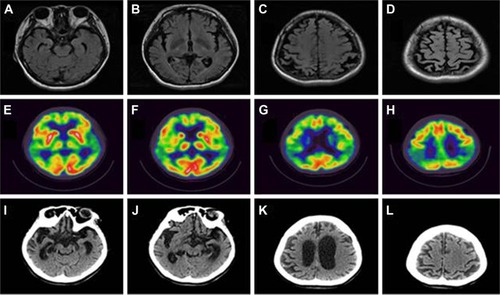Figures & data
Figure 1 Neuroimaging data.

Figure 2 Data of genetic analysis for the AD patient with PSEN1 L226F.
Abbreviations: SSCP, single strand conformation polymorphism; AD, Alzheimer’s disease.

Figure 3 3D structure prediction for PSEX1 protein with L226F mutation, comparing to the normal PSEN1 protein.

Table 1 Comparisons of dominant features of patients with PSEN1 L226F
Table 2 Comparisons of the distinct characteristics between the patients with PSEN1, L226F, and L226R
Table 3 Comparisons of PSEN1 mutations, which could be associated with FTD-like phenotypes
